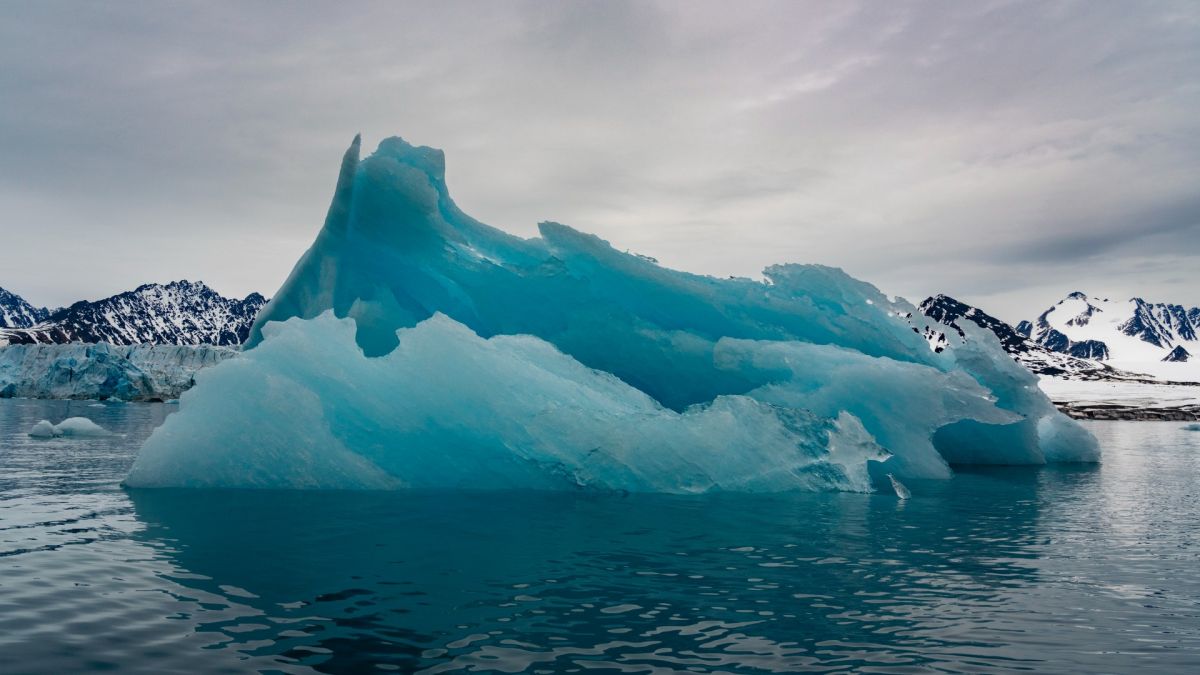
According to new research, the world’s oldest known glacier is approximately 2.9 billion years old. Scientists have identified ancient rock formations in South Africa that bear the unmistakable signs of glacial activity, such as striations and “dropstones” – boulders that were transported and deposited by glacial ice. This finding pushes back the origins of glaciers by about a billion years, suggesting that glacial activity could have played a crucial role in shaping Earth’s landscape much earlier than previously believed. This discovery sheds light on the planet’s ancient climate and offers valuable insights into Earth’s geological history..
Evidence of the world’s oldest glacier is hiding near South Africa’s gold fields, a new study reports. The glacial sediments date back 2.9 billion years, according to the researchers, who published their findings on June 13 in the journal Geochemical Perspectives Letters.
For their study, the scientists unearthed shale deposits and analyzed core samples from field sites in northeastern South Africa that are part of the Pongola Supergroup — a thick succession of volcanic and sedimentary rocks located that formed in the Mesoarchaean era (3.2 billion to 2.8 billion years ago).
“We found extremely well-preserved glacial deposits close to the gold fields of South Africa,” study co-author Ilya Bindeman, professor of isotope geochemistry and volcanology at the University of Oregon, said in a statement. “This is one of the few areas which remain fairly intact and unchanged from the early Earth.”
In the past, other researchers have uncovered some physical samples that suggest ancient glaciation in this region. However, evidence of glaciation during this era billions of years ago is hotly debated.
Related: Melting glaciers reveal 1,700-year-old weapons used by reindeer hunters
To investigate, the scientists gathered sedimentary rock samples in the field from the Kaapvaal Craton — an ancient rock body located in the southeastern region of South Africa that contains deposits from the Pongola Supergroup. They also analyzed core samples from the same region that were contributed by the AngloGold-Ashanti mining company. Within these samples, the researchers discovered the world’s oldest known glacial moraines, which are “basically the debris left by a glacier as it gradually melts and contracts,” Bindeman said.
To determine the climatic conditions present at the time the sediments formed, the scientists used a technique called triple oxygen isotope analysis, in which they measured three different forms — or isotopes — of oxygen present in the sediment. They found that the level of certain isotopes in their samples matched those common in an icy climate.
The presence of this glacial material could offer clues into Earth’s climate and geography during the time period. One theory is that this area of South Africa may have been close to one of the poles 2.9 billion years ago, the study authors say.
“Another possibility is that the whole Earth was in a ‘snowball Earth’ period, when low atmospheric concentrations of [the greenhouse gases carbon dioxide and methane] led to a ‘reverse greenhouse effect,’ causing much of the planet to freeze,” study co-author Axel Hofmann, an associate professor in the Department of Geology at University of Johannesburg in South Africa, said in the statement. “If so, this would be the earliest such global cooling period recorded.”
While these theories may be possible, more research needs to be done to truly understand the world’s climate billions of years ago, according to Andrey Bekker, an associate professor of geology at the University of California, Riverside who was not involved in the research.
“It’s incremental progress towards sort of understanding [these] early Earth environments, climatic changes in the early history of Earth, and so on,” he told Live Science. But he added that “we don’t know what was the extent of this cold climate,” — whether it was just local or extended to low latitudes around the world.
A study has found evidence of the world’s oldest glacier near South Africa’s gold fields. The glacial sediments, dating back 2.9 billion years, were discovered through the analysis of shale deposits and core samples from field sites in northeastern South Africa. The findings could provide insights into Earth’s climate and geography during that time. One theory suggests that the area may have been close to one of the poles, while another proposes a “snowball Earth” period when the planet froze. Further research is needed to fully understand the extent of the climate changes during this period.
Hashtags: #Worlds #oldest #glacier #dates #billion #years #research #finds

Hgvt.edu.vn trang tổng hợp kiến thức giáo dục, công nghệ, đời sống. Bạn có thể tự đánh giá nội dung và trở thành cộng tác viên của chúng tôi



 Hgvt.edu.vn trang tổng hợp kiến thức giáo dục, công nghệ, đời sống. Bạn có thể tự đánh giá nội dung và trở thành cộng tác viên của chúng tôi
Hgvt.edu.vn trang tổng hợp kiến thức giáo dục, công nghệ, đời sống. Bạn có thể tự đánh giá nội dung và trở thành cộng tác viên của chúng tôi
Leave a Reply